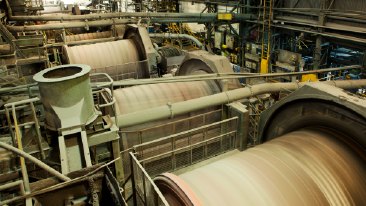As a global pandemic has forced many mines into partial operation or into a phased restart, a lot of organizations are relying on estimates to decide how to adjust performance at a reduced throughput. In many cases, however, these estimates are based on incomplete information, leading to misguided decisions. Better scenario analysis that draws on real data allows mining companies to make the best possible choices for the business, avoiding costly errors.
To reduce risk, mining companies can use Aspen Fidelis Reliability™ to model a mine and concentrator and determine how to obtain the maximum throughput with the minimum costs. Models can include multiple constraints, such as concentration and distribution of labor as well as how to best deploy an asset. Recently, we helped one mine establish that they could capture higher margins by running half the concentrator at full capacity rather than an entire process at 50%. The company was able to gain several points of margin (nearly double figures) by confirming the impact of making a simple adjustment to their operations.
How Digitalization Delivers Business Value for Mines
With a historical background of highly manual processes, mines are digitalizing their business from the shaft to the concentrator plants to create safer, more sustainable operations. Using Aspen Fidelis tools for reliability, availability and maintainability (RAM) studies, we can model an entire mining operation, enabling management to identify where the operation has problems, quantify the financial impact to their business, and clearly prioritize areas for investment. There is no need to estimate or rely on anecdotal evidence when high-fidelity RAM models, or digital twins, can provide decision support.
Identifying and Addressing Operational Problems
Mining leaders can create endless “what if” scenarios allowing them to measure impact, risk and reward for many eventualities. Here are just a few examples of what such analyses can help do:
- Stop measuring pinch points by gut feel and start creating real financial models with real numbers.
- Identify aging equipment, allowing the business to accommodate and plan for scaled investment based upon the returns.
- Quantify the purity of end products and assess the cost of quality improvements, taking into account the increased costs associated with a higher purity.
- Balance yield with returns to produce the optimum product with minimum tailings.
Mines can create digital twins to model and manage all stages of the plant lifecycle. From design and acquisition of a new asset, through service and mid-life updates all the way to managing an aging asset, mining companies can make informed choices on investment to always deliver the best returns for the business.
Try it yourself. AspenTech’s consultants can work with you on a short-term 30-day initiative to teach you how to use these tools as part of your daily decision-making process. For more information, please contact me via email.





Leave A Comment